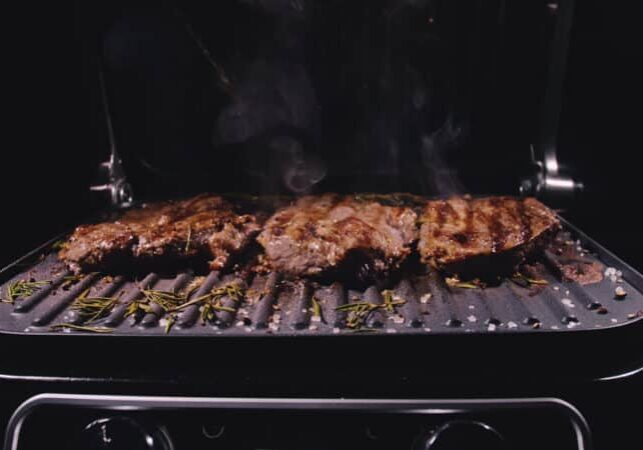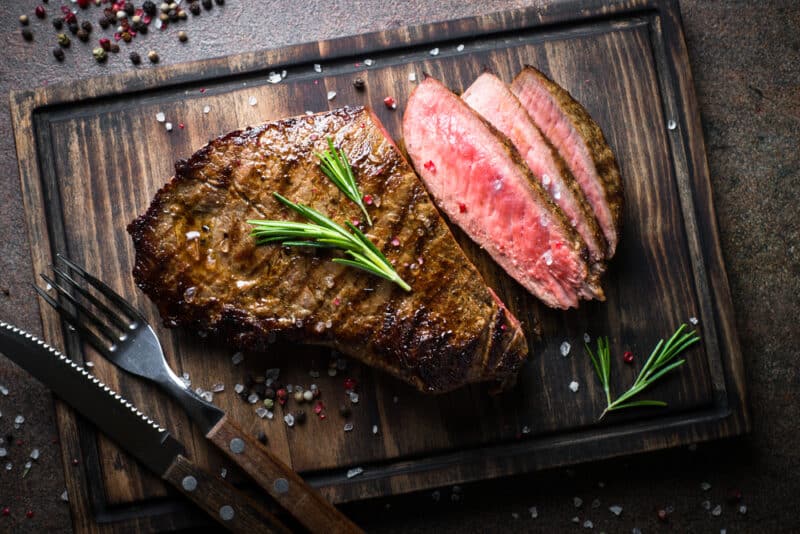The Benefits of Letting Your Brisket Rest: Unlocking More Flavor
TheGrillingMaster.com is reader-supported. If you buy something using the links on our site, we might earn an affiliate commission at no added cost to you. This helps us pay our staff to keep making awesome content for you!

Grilling is an art form that relies on the perfect balance of heat, time, and technique. One often-overlooked element of this process is the resting phase. Resting plays a vital role in the final outcome of your grilled masterpiece. In this article I will dive into the benefits of letting your brisket rest… and unlocking the secrets to succulent, tender, and flavorful goodness.
What is brisket and why is it unique?
Brisket is a cut of meat that comes from the breast or lower chest of beef or veal.
This particular cut is characterized by its tough and fibrous texture – but also a generous amount of connective tissue. Brisket requires a low and slow cooking method because of its tough connective tissue. I always recommend smoking or slow roasting, to break down the collagen and tenderize the meat.
The challenges of cooking brisket lie in achieving the perfect balance of tenderness and juiciness.
Overcooked brisket can be dry and tough, while undercooked brisket may be chewy and unappetizing. This is where the art of resting comes into play! Resting is a crucial step to ensure the ideal texture and flavor of your finished product.
The science behind resting brisket
When cooking meat the heat causes the muscle fibers to contract and this has the effect of pushing the juices toward the center of the cut. During the resting phase the muscle fibers have a chance to relax which then allows the juices to redistribute evenly throughout the meat.
Also something to note: the resting process allows the internal temperature of the meat to stabilize. This stabilization helps prevent the meat from overcooking and ensuring that your brisket remains tender and juicy.

The benefits of resting brisket
-
Enhanced flavor and juiciness: By allowing the juices to redistribute evenly you will enjoy a more flavorful and juicy bite every time. The resting phase also helps to concentrate the flavors within the meat which results in a richer taste that everyone will love.
-
Improved tenderness and texture: As the muscle fibers “relax” the meat becomes more tender. This means that your brisket will have a softer and melt-in-your-mouth texture that’s perfect for meat lovers.
-
Easier slicing and serving: Resting your brisket ensures that the juices are evenly distributed making it easier to slice and serve without losing those precious liquids. This helps maintain the meat’s moisture during the meal.
-
Increased overall satisfaction and enjoyment: By taking the time to let your brisket rest you are guaranteed to have a better tasting brisket.
Related Reading: The ultimate guide to brisket tacos.
How to properly rest your brisket
-
Ideal resting time for brisket: The general rule of thumb is to rest your brisket for approximately 30 minutes to an hour. This allows the meat to relax and the juices to redistribute for optimal results.
-
Best methods for resting: There are several ways to rest your brisket, but the most popular methods include wrapping with aluminum foil, using a cooler, or placing the meat in an insulated food carrier. The key is to keep the meat warm without continuing the cooking process.
-
Key considerations to maintain food safety: While resting your brisket, it’s important to ensure that the meat stays within the safe temperature range of 140°F to 145°F. Use a meat thermometer to monitor the temperature and keep the meat covered to retain heat.
Common mistakes to avoid when resting brisket
- Cutting into the meat too soon: This will cause the juices to escape! Resist the temptation to cut into the meat until it has rested for the appropriate amount of time if you want the best results.
-
Over-resting the brisket: Allowing the meat to rest for too long can lead to a loss of heat and moisture. Stick to the recommended resting time to maintain because no one wants to be served cold brisket.
-
Inadequate insulation during the resting phase: Failing to properly insulate your brisket can result in a loss of heat. Use aluminum foil, a cooler, or an insulated food carrier to keep your brisket warm during the resting phase.
Letting your brisket rest is an essential step in the grilling process that can significantly enhance the flavor and overall enjoyment of your meal.
More Reading: Learn how to perfectly smoked brisket.
Learn More About Grilling
If you want to learn more about grilling, check out these other helpful resources!

Patrick Harvey
Patrick is a life long grilling enthusiast with an eye for product development and user experience. His expertise helps us test and review all of the products you see the website.
About The Grilling Master
Hi there, I'm Kevin Turner, Founder and CEO of thegrillingmaster.com.
My passion has always been grilling, smoking and BBQ delicious meats that satisfy my inner carnivore!
I started this website to share my passion and knowledge with you, the hungry reader who wants to prepare the perfect meal.
You can leverage my years of experience as a pit master and professional.
Send me a message and let's connect on Twitter here.

















